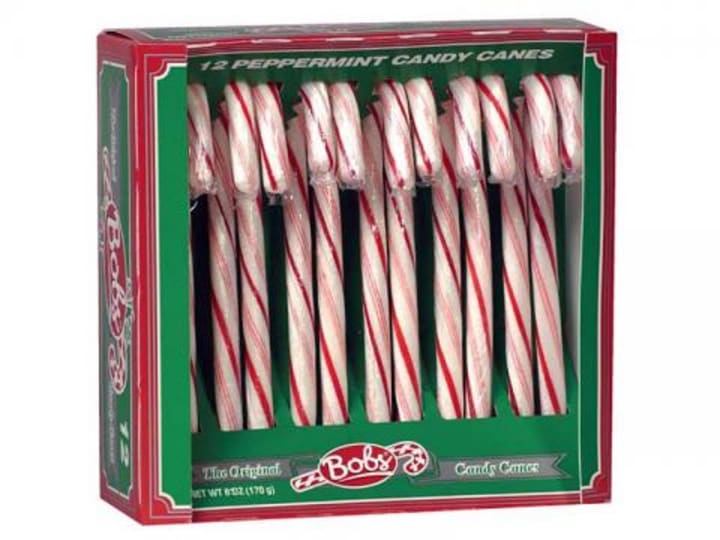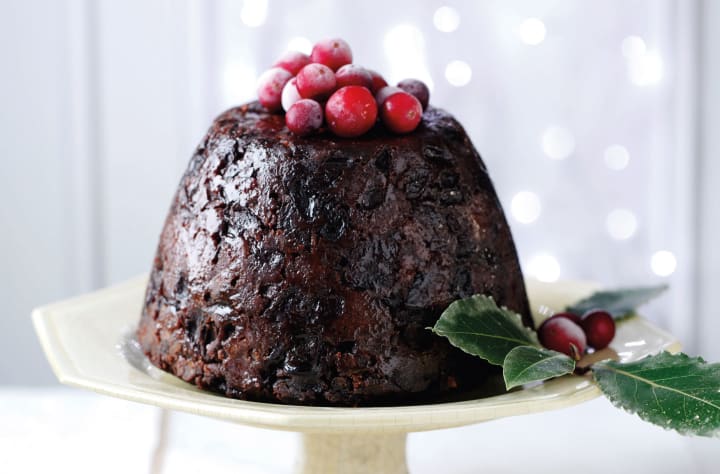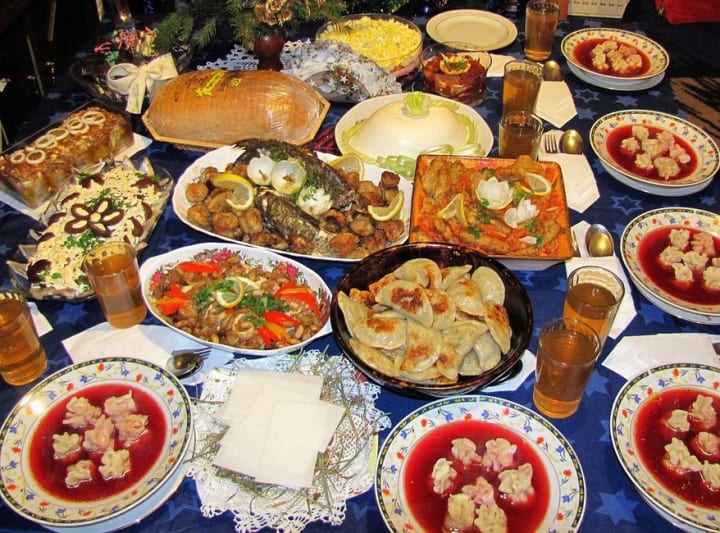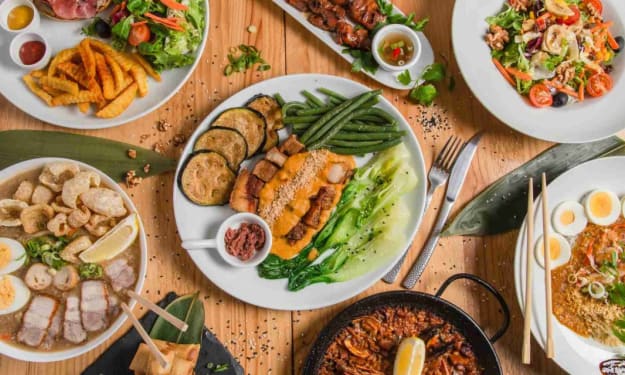The Joys of Christmas Food
Food enjoyed during the holidays

The Yule Log
This is a holiday cake called the Yule Log also known as the Christmas Log or Buche de Noel. This cake that is made at Christmastime dates back to the 19th century. At this time rolled sponge cakes filled with jam or cream and covered with butter cream icing began to be mentioned in European cookbooks. They were usually decorated with marzipan or meringue. The rolled shape of the cake was to remind one of a log and was typically covered with chocolate butter cream to look like the “bark of a tree”.
An interesting story is that in Paris, Napoleon I of France issued a proclamation requiring households to keep their chimneys closed during the winter so that cold air would not get in and cause medical problems. It prevented Parisians from enjoying their fireplaces especially at Christmas and so a French baker invented this cake to remind everyone of the traditional Yule Log that otherwise would be burning in their fireplaces. The Yule Log cake was served at the midnight feast following Mass on Christmas Eve.
Candy Canes

According to legend the first candy canes showed up in 1670 when a choirmaster at the Cologne Cathedral in Cologne, Germany handed out sugar sticks shaped like shepherd’s crooks (to represent the humble shepherds who were the first to worship the newborn Christ) to young singers to keep them quiet during the long living Creche ceremony. Only at the turn of the century did the candy canes gain their red stripes and peppermint flavor.

The body of the cane is white which represents the life that is pure and the red stripes are symbolic of the Lord’s sacrifice for man. In the 1920s Bob McCormack started making candy canes for his children, friends and local shopkeepers in Albany, Georgia. This was a long and tedious process so very few pieces of candy were made. Then in the 1950s Bob’s brother-in-law Gregory Keller, a Catholic priest invented a machine to make the canes. Bobs Candies Inc. became the largest producer of candy canes in the world.
Christmas Cookies

Christmas cookies can be found in medieval European recipes. Dutch and German settlers introduced the cookie cutter, decorative molds and festive holiday decorations to America. German lebkuchen (gingerbread) was most likely the 1st cookie associated with Christmas and the English introduced sugar cookies. In the 1500s Christmas cookies were made all over Europe. Gingerbread cookies were popular in Sweden and Norwegians made krumkake (thin lemon and cardamom scented wafers). Christmas cookies in all shapes and sizes were hung on Christmas trees as ornaments.
Birds for the Dinner Table

Christmas tables usually included birds such as peacocks, swans, geese and turkeys. Turkeys were introduced to Europe in the 16th century. For years these birds were found only on the tables of the wealthy. In America turkey was the natural choice for a Christmas feast however through the 17th century historic newspapers reveal that the goose took the main place on the Christmas table. Peacocks and swans were food for the rich.
Fruit Cake

Making cake with dried fruit dates back to the Middle Ages. Fruit cake is a British specialty and only in the 13th century did dried fruit begin to arrive to Britain from Portugal and the East Mediterranean. Fruit cakes have been used for celebrations as early as the 18th century.

One classic phrase on the longevity of this food was coined in 1983 by Russell Baker “Fruitcake is forever.” Fruitcakes are a family tradition and recipes are passed from generation to generation. They are baked with love and sent to people as Christmas gifts. The oldest fruitcake company is in the US is The Collin Street Bakery, Corsicana, Texas (1896).
Gingerbread Men

What would Christmas be without gingerbread men? The origin of the word gingerbread comes from the 13th century gingerbras in Old French it means “preserved ginger”. The ending of the word changed from –bras to –bread in the mid-14rh century. In the US children as well as adults are particularly fond of gingerbread cookies. Gingerbread was cheap and easy to make and from a small batch you could get many cookies. It was shaped by wooden molds which were sometimes very large to make elaborate and beautiful cookies.

The tradition of shaping gingerbread to resemble men and pigs, especially for Bonfire Night (Nov.5) is still popular today in Britain. Queen Elizabeth I favored important visitors with charming gingerbread likenesses of themselves. After the Grimm Brothers’ fairy tale about Hansel and Gretel describing a house made of gingerbread German bakeries began offering them. There was icing snow on the roofs, edible Christmas cards and finely detailed and molded cookies. In the 19th century only professional gingerbread bakers were allowed to bake this treat in Germany and France but during Christmas and Easter anyone could bake it. In the 1600s Nuremburg, Germany became the “Gingerbread Capital of the World”.
Mince Meat and Plum Pudding

Mincemeat pies date back to Medieval times. At that time a recipe for this kind of pie also included meat. In the mid-19th century meat began to disappear from the recipes leaving fruit, nuts, sugar, spice and suet. This pie may also include some alcohol such as brandy.

In the 15th century along came the Christmas pudding or Plum Pudding. At first it was not associated with Christmas until the 1670s and then it was called “Christmas pottage”. Stir-Up Day is the name given to the day on which Christmas puddings are made in England. Stir-up Sunday, the last Sunday before Advent is considered the final day when one can make Christmas fruitcakes and puddings since they need time to age before serving.
Traditional Christmas Suppers

The traditional 12-dish Christmas Eve supper in Poland, Ukraine and Lithuania consists of 12 dishes representing the 12 months of the year. Its roots can be traced to pre-Christian times. This was a common Eastern Orthodox tradition in the times of the Russian Empire. All 3 countries have almost the same dishes. Since at this time people fast no meat, eggs or milk are allowed during supper. The main offerings were fish, mushrooms and types of grain.
In Poland and Ukraine the supper begins with a kutia (a sweet grain pudding) but in Lithuania it begins with poppy milk (a traditional Lithuanian drink or soup). Poppy seeds are widely used for Christmas Eve dishes because they symbolize abundance and prosperity.
Fish dishes usually include herring, carp or pike. The fish symbolizes the ichthus a fish-like symbol which consists of two intersecting arcs resembling a fish profile and used by early Christians as a secret symbol relating to Jesus and his disciples as “fishers of men”. Lithuanian herring dishes such as herring with carrots or herring with mushrooms are served.

One of the main dishes eaten on Christmas Eve are mushrooms dried or pickled. In Poland and Ukraine sauerkraut with wild mushrooms or fish soup is eaten.

Also boiled or deep fried pirogi which are dumplings filled with either sauerkraut, mushrooms, smashed poppy seeds and other ingredients. For dessert doughnuts filled with jam in Poland and Ukraine but in Lithuania sweet dishes are not common.

Traditionally dried fruit compote or cranberry kisiel are served as beverages.
The Christmas Eve supper is usually held by candle light and starts when the first evening star appears in the sky. This star symbolizes the birth of Jesus in Christian tradition and a soul of a deceased ancestor in pre-Christian beliefs.
In Lithuania they say many strange things happen on that night and in Poland, an extra plate and seat are always left for anyone, such as a drifter, to be accepted as a guest. The belief is that he may be Jesus and should be welcomed.
About the Creator
Rasma Raisters
My passions are writing and creating poetry. I write for several sites online and have four themed blogs on Wordpress. Please follow me on Twitter.






Comments
There are no comments for this story
Be the first to respond and start the conversation.